Patent MarketPlace: Medical Electronic and Device Patents for Sale
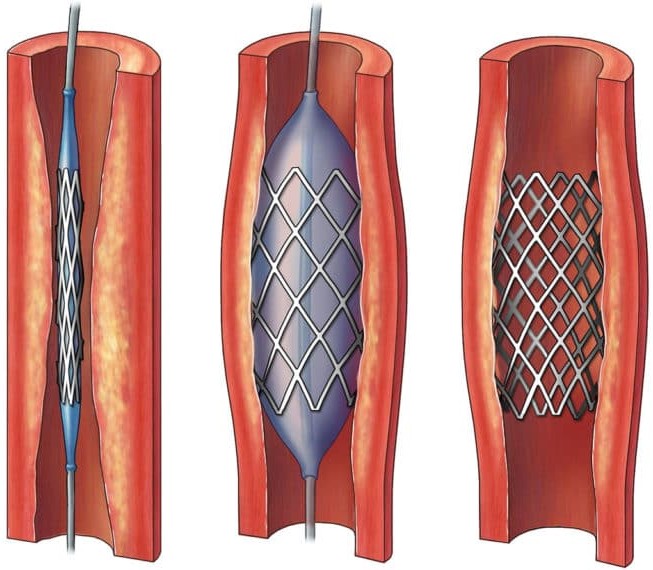 Next-Generation Stent Placement (Dakak): U.S. Patent Nos. 10,258,489 and 10,625,059
Next-Generation Stent Placement (Dakak): U.S. Patent Nos. 10,258,489 and 10,625,059
One out of five deaths in America are from heart disease making it far and away the leading cause of death for both American men and women. A common treatment for heart disease is the installation of a stent - a small, expandable metal tube that is used to keep blood vessels or other tubular structures open, especially those leading to and from the heart. A stent is typically made of a fine mesh wire and is inserted into the body through a catheter.
This patent family creates an angioplasty apparatus for facilitating placement of a lumen stent for dilating ostial stenosis. It creates a catheter-based device aimed specifically at treating ostial lesions in both coronary and peripheral cases using a novel ballon-positioning technology. It enables the heart surgeon to accurately mark and locate stents relative to the ostial lesion. A marker balloon accurately locates the stent position at ostial treatment sites. This patented device can work in conjunction with existing stent delivery systems or be configured with an integrated stent system. The marker balloon allows for blood perfusion while inflated and its low-profile design does not alter or affect stent-delivery techniques.
U.S. Patent No. 10,258,489 for an “Angioplasty anchor and/or marker balloon stent catheter apparatus and method” and U.S. Patent No. 10,625,059 for an “Angioplasty, self-expanding, stent catheter with low pressure anchor and/or marker balloon assembly and method” will enable any manufacturer of surgical equipment to offer a stent placement system that leapfrogs the technology of all it is competitors!
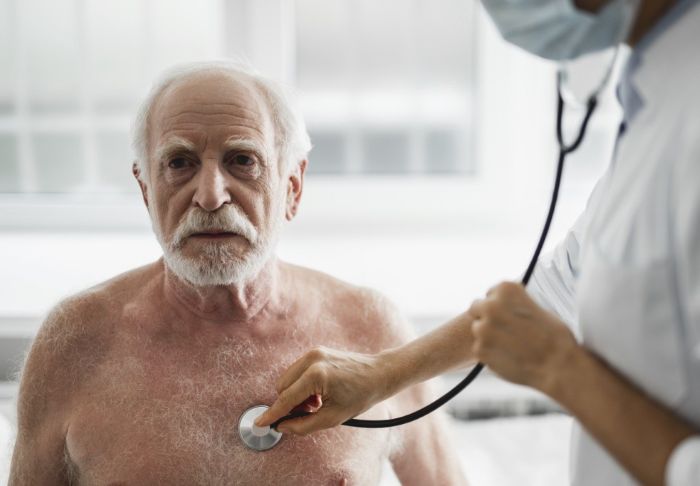 More Reliable Heart Medication Administration (Ostrow): U.S. Patent No. 12,070,328
More Reliable Heart Medication Administration (Ostrow): U.S. Patent No. 12,070,328
Heart disease is the leading killer of American men and women of all ages and ethnicities. Treating and monitoring those who have heart disease can be an expensive and labor-intensive process. Surely there must be a better way to monitor the millions of American being treated for this ailment.
There is. This patent creates a device that is worn by an individual. It includes a central processing unit, a memory unit that contains programming and diagnostic values, a global positioning system (GPS) unit, a wireless communications component, a sensor that measures diastolic and systolic blood pressure, a second sensor that measures heart rate, and a transdermal patch containing medication prescribed by the patient’s physician. It also includes a button the patient can use to transmit an emergency signal to his or her physician, caregiver, and/or family members. This device enables a patient’s physician to remotely monitor a patient’s drug usage, and it can be programmed to automatically administer medication, or have the physician remotely administer it, or enable the patient to administer the drug himself or herself. This device enables physicians to more effectively monitor and treat cardiac patients. The initial months of treatment are critical, and this device ensures proper home monitoring and real-time response during this crucial period. With continuous tracking and immediate intervention capabilities, it provides peace of mind and enhances patient outcomes.
U.S. Patent No. 12,070,328 for a “Wearable personal healthcare sensor apparatus” introduces an innovative device that will dramatically improve the care of heart disease patients and the administration of heart disease patient medications – without requiring the patient to make a physical visit to the doctor’s office.
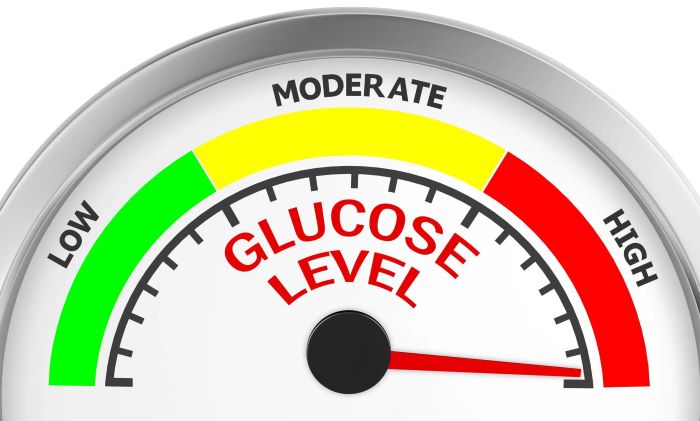 Passive, Automatic Urine Analysis (Bronte): U.S. Patent No. 11,992,318
Passive, Automatic Urine Analysis (Bronte): U.S. Patent No. 11,992,318
Diabetics need to regularly test for glucose in their urine. The process is not only a hassle, but it is easy to forget. Testing the urine can also detect kidney disease or a urinary tract infection. Taking a urine sample and sending it to a lab is expensive and time-consuming. Urine test strips are cheaper and faster, but still an annoyance. For diabetics – especially older diabetics – there must be a better way to test their urine and have a record of the test results.
That is exactly what this patent does! It creates a device that fits on the inside rim of the subject’s toilet, and it is linked to the subject’s smart phone. When the subject urinates, it draws off a sample of water and urine from the toilet, a lab-on-a-chip analyzes the urine, and the device transmits the results to the subject’s smart phone. Results can also be transmitted to a caregiver, family member, or other person responsible for the subject’s care. Without any action by the subject, his or her urine is tested automatically and the results are available immediately. Any spike in glucose in the subject’s urine or other negative test result can provide an immediate warning that medical attention is required.
U.S. Patent No. 11,992,318 for a “Diagnostic lab-on-a-chip device” can be used by any medical device or urine testing equipment manufacturer to office diabetics and others an affordable and practical device that will passively and automatically test their urine and report the results.
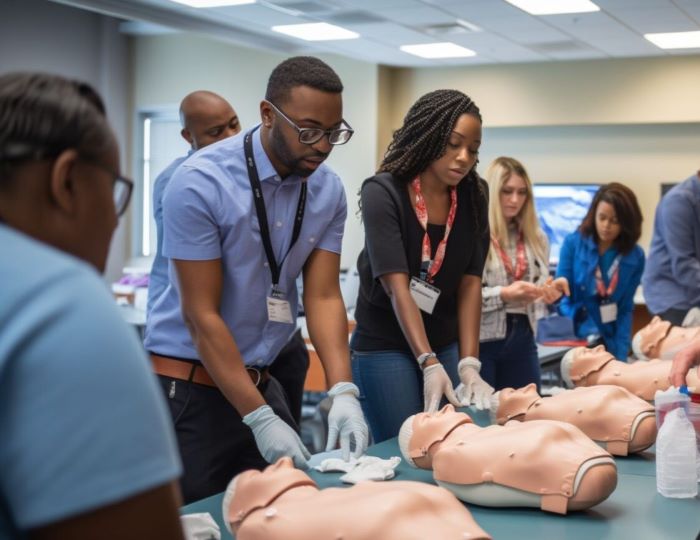 Heart Compression Simulation Device for CPR Training (Heart Compression Resuscitation): U.S. and European Patent Portfolio
Heart Compression Simulation Device for CPR Training (Heart Compression Resuscitation): U.S. and European Patent Portfolio
Cardiac arrest remains a critical public health issue. Over 356,000 out-of-hospital cardiac arrests occur annually in the United States according to the CDC. Despite the large number of medical professionals and citizens with Cardiopulmonary Resuscitation (CPR) training, survival rates are alarmingly low at just 9%. Only more effective CPR training will increase survival rates among cardiac arrest victims. During CPR, the American Heart Association recommendation is to compress the chest to a depth of at least two inches and maintain a rate of 100-120 compressions per minute. Approximately 70% of adult patients suffer rib or sternal fractures during CPR, and this can startle even trained rescuers. They stop the compressions, and this jeopardizes the patient’s chance of survival.
Unfortunately, there are currently no training products on the market that accurately simulate the common and unsettling experience of fracturing a rib or the sternum while administering CPR. This patent portfolio introduces a heart compression simulation device that addresses this training gap by replicating the sensation of rib fractures during CPR training as well as chest recoil. It offers a “truer-to-life” learning experience for CPR trainees. The result is a more confident and skilled rescuer, prepared to continue effective compressions despite encountering this real-world complication.
This life-saving patent portfolio includes U.S. Patent No. 8,323,030 and European Patent 2559020 for a “Heart compression simulation device” and U.S. Patent No. 8,465,294 for a “Cardiac compression simulation device.” Any manufacturer of medical devices or CPR training manikins can use this portfolio to offer its customers a dramatically more realistic CPR training experience. This portfolio presents a rare opportunity to capitalize on a manufacturing-ready innovation that will dramatically improve CPR training effectiveness and patient outcomes. Additionally, there are prototypes and proof-of-concept studies that support claims made by the inventors.
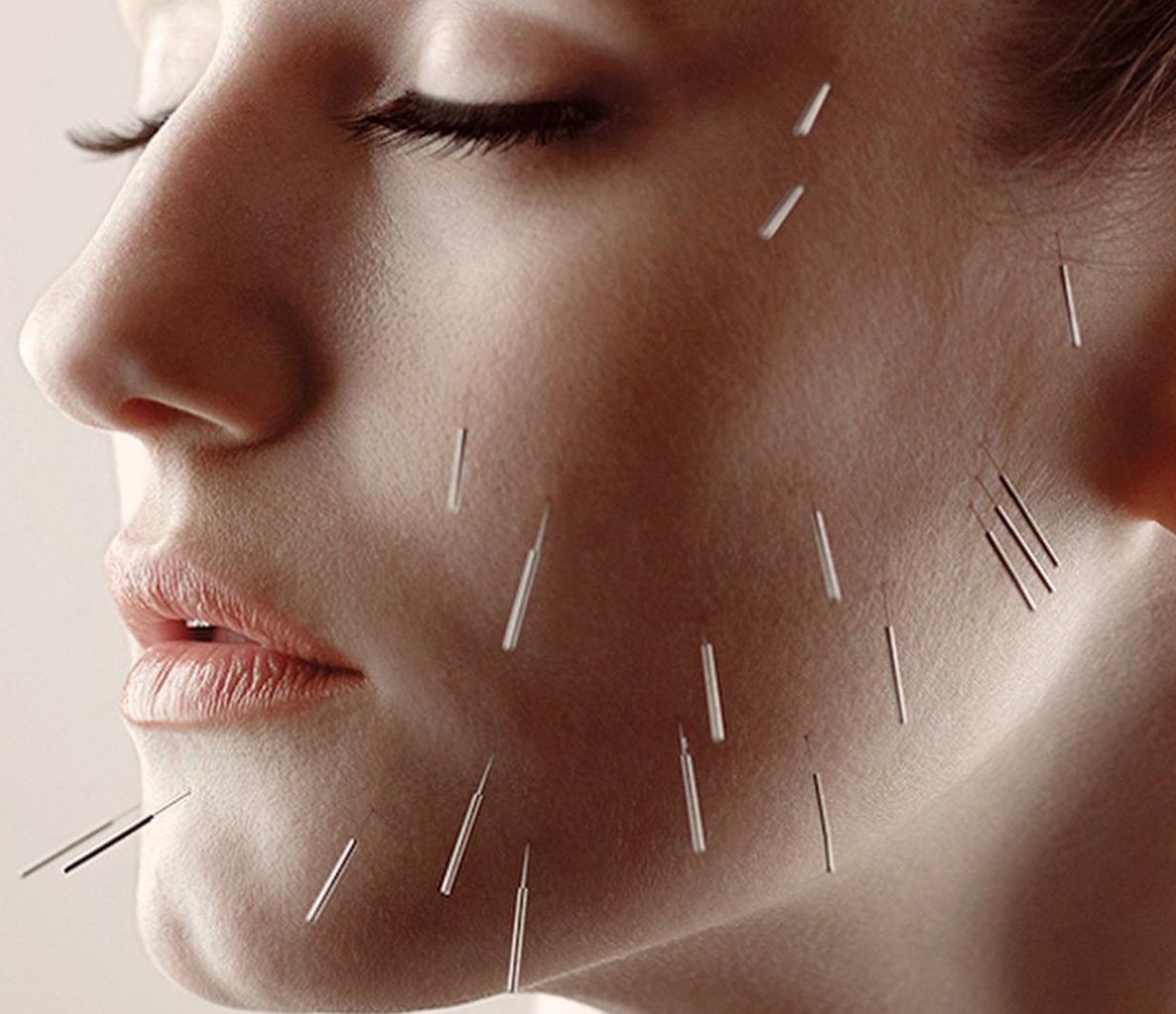 Do-It-Yourself Acupressure Facial (Touch + Glow): U.S. Patent Nos. 12,023,298 and 12,029,702
Do-It-Yourself Acupressure Facial (Touch + Glow): U.S. Patent Nos. 12,023,298 and 12,029,702
Acupuncture has been around for over two thousand years and has been a proven treatment for numerous ailments and conditions. One very effective use for acupuncture is to tighten the skin, removing and softening wrinkles to create a fresher, younger, look and feel. Wouldn’t it be great if we could have the benefit of acupuncture without all those needles? With acupressure we can.
This patent family creates a non-invasive, therapeutic wand with point prescription acupressure protocol. The user follows the instructions by touching the tip of the wand to specific points on the face. The tip of the wand vibrates while it also produces a magnetic field, and the combination of the two tightens the skin as the wand passes over it, significantly softening wrinkles. This simple process is easy, painless, safe, and highly effective. The wand includes a printed circuit board and timer that guides the user through the massage.
Not only can U.S. Patent Nos. 12,023,298 and 12,029,702 for a “Therapeutic wand system, kit, and method” be used for a highly effective acupressure facial, its versatility gives the owner the flexibility to create therapeutic acupressure point remedies for pain management, sleep disturbances, stress, and other ailments. This patent family would be a strategic acquisition for any manufacturer in the healthcare or beauty industry.
 SmartWatch and Medical Monitoring Device (Bouyahia and Kerrouche): U.S., European, and PCT Patents and Patent Applications
SmartWatch and Medical Monitoring Device (Bouyahia and Kerrouche): U.S., European, and PCT Patents and Patent Applications
It’s easy to check your oxygen level, heart rate, and blood flow. Just call up your family physician, make an appointment, take time off from work, drive to your physician’s office, wait in the waiting room, be tested by a medical assistant, wait again to see your doctor, and get the results. Okay. Maybe not so easy. There must be a way to check your vital signs at any time without all the fuss.
There is. This portfolio covers a smartwatch that – in addition to providing you with the time and other data – passively monitors your oxygen level, heart rate, and blood flow. It includes a measurement instrument positioned opposite the radial artery of the smartwatch owner’s wrist that includes sensors that continuously measure the oxygen level, heart rate, and ascending and descending blood flow. A processor in the watch collects data from the three sensors, analyzes the data, and stores it for download by the watch owner. The newer U.S. Patent includes a sensor that can save its user from an avalanche, getting lost in the mountains, or drowning.
Patent and Application Portfolio
- U.S. Patent No. 11,717,176: Smartwatch-type individual medical monitoring device and method for individual medical monitoring of a user thereof
- U.S. Patent No. 12,064,263: Connected bracelet type device for individual monitoring and method for monitoring a user
- U.S. Patent Application 20230371825: Smartwatch-type individual medical monitoring device and method for individual medical monitoring of a user thereof
- European Patent 3900621: Individual medical monitoring device such as a connected watch and corresponding method for individual medical monitoring of a user (Valid in Germany, France, UK, Italy, Spain, Poland and Switzerland)
- PCT Patent Application 2021214413: Smartwatch-type personal medical monitoring device and corresponding user personal medical monitoring method
The acquirer of this portfolio will be able to introduce the first smartwatch with medical monitoring capabilities, and the PCT Application enables the acquirer to apply for additional national patents anywhere in the world!
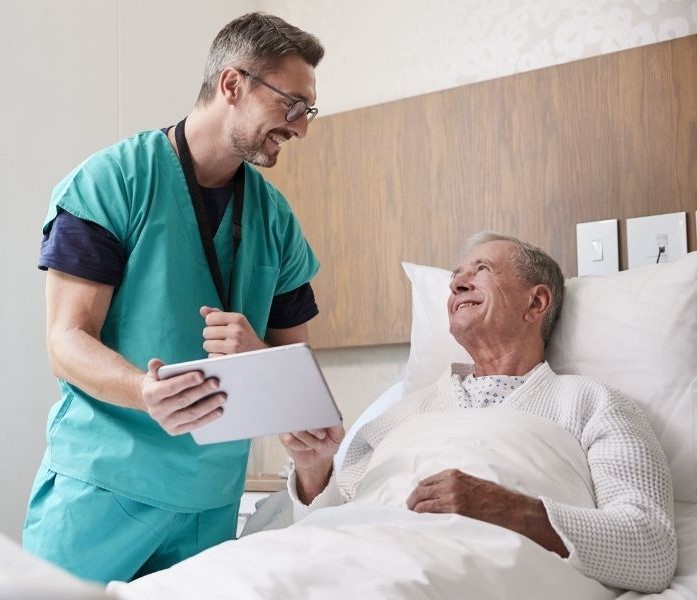 Add-On for In-Bed Exercise (Stuck in Bed Fitness Solutions): U.S. Patent No. 9,393,455
Add-On for In-Bed Exercise (Stuck in Bed Fitness Solutions): U.S. Patent No. 9,393,455
We all need to exercise, but not all of us can. Those who are bed-ridden – either temporarily or permanently – simply do not have a way to exercise! Atrophying muscles exacerbate whatever health issues put that person in bed in the first place. Even some mild exercise will stimulate the circulatory system, improve muscle tone, and – quite frankly – give that bed-ridden person something to do!
This patent creates a practical and affordable solution for the bedridden person who needs exercise. It creates a rail that attaches to the frame of the bed and extends over the mid-section of the bed. The unit can alternately be on legs that rest on the floor to the left and right of the bed. The legs at the bottoms of the rail, or the brackets attached to the bed frame, give the device weight-bearing strength and rigidity, and it can be placed at any point up or down the length of the bed based on the needs of the user. The rail includes multiple openings that can be used to hold exercise devices. For example, resistance bands can be attached to the rail that the bed occupant uses to exercise his or her arms and legs. This patent creates the ultimate strength-training device for the bed-ridden. It is ideal for cardio-motion therapy as well as fitness-and-strength training. It attaches to the bed in minutes, so it is convenient for both the patient and the caregiver or therapist, and it eliminates fall risks for the patient and injuries to the caregiver.
U.S. Patent No. 9,393,455 for a “Bed exercise device” would be a strategic acquisition for any hospital bed manufacturer. A product based on this patent can be offered as an accessory on new beds, or as an aftermarket product for beds currently in use.
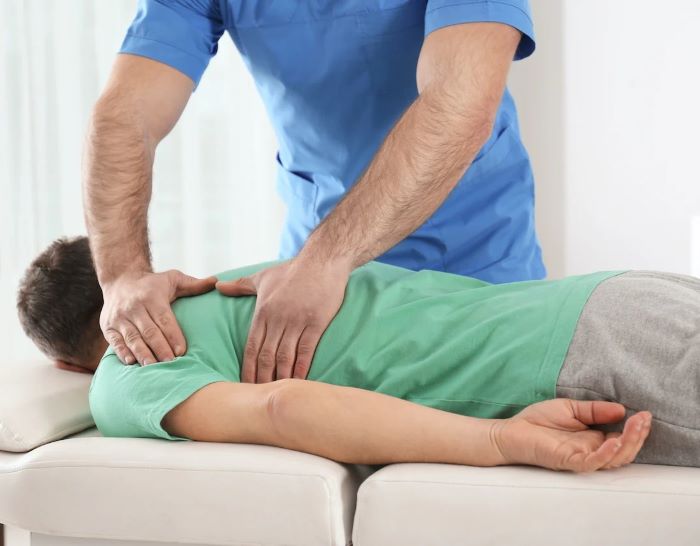 New-Concept Massage Glove (Ptah): U.S. Patent No. 10,383,378
New-Concept Massage Glove (Ptah): U.S. Patent No. 10,383,378
Massages are both a unique luxury and a key element in many medical and rehab treatments. A skilled massage therapist can reach those sore or stiff muscles and bring joyful, healing relief. The limitation that every massage therapist has, however, is his or her hands. What if a massage professional could provide yet a further level of dimension of pressure against those hurting muscles?
This patent does exactly that. It creates a glove for a massage therapist that has small track balls that fit in rollers embedded in the palm of the glove. In addition to the pressure applied by the therapist in exactly the right place, the roller balls provide yet a deeper massage without having to apply yet more pressure that can be uncomfortable for the massage recipient and exhausting for the therapist. Multiple variations of gloves covered by this patent can be offered with different numbers of roller balls in different locations for multiple levels of massage.
U.S. Patent No. 10,383,378 for “Therapeutic massage gloves” would enable any supplier to the health care industry to create and own a totally new product category.
 Temporary Access and Closure for Cardiac Surgery (Milo): U.S. Patent No. 9,610,097 and European Patent 2747679
Temporary Access and Closure for Cardiac Surgery (Milo): U.S. Patent No. 9,610,097 and European Patent 2747679
About 500,000 Americans undergo open heart surgery in the U.S. each year. This involves the surgeon accessing the ventricle of the heart while a heart-lung machine takes over the patient’s cardiac and respiratory functions. Time is critical. The surgeon needs to be in and out as soon as possible so the patient can resume his or her own heart and lung functions. However, doing surgery on a beating heart eliminates the need for a heart-lung machine. This approach is usually done through the apex of the heart, but carries complications such as muscle tearing, massive bleeding, and – possibly – death. Introduction of larger devices or implants, or instruments, is not practical.
This patent family creates a device that provides temporary access to the ventricle of the heart and then closes the access passage when the surgery is completed – without the loss of even one drop of blood! The device includes an anchor with a wire spiral for implantation in the tissue wall of the heart and a handle that is detachably connected to the anchor. The handle provides an axial passageway in which a hollow needle is received. With the anchor in juxtaposition with the apex of the heart, the pointed end of the hollow needle is inserted into the ventricle. With its presence traversing the wall of the heart, it provides a stable axis about which the wire spiral can be rotated to seat the anchor in precise circumscribing fashion about the hollow needle. Once the implant carrying device has completed its function, it is retracted outward while the spiral anchor is rotated deeper into the muscle closing the penetration point in the apex. Reconstruction of the contour of the apex is then completed. This technology also enables the introduction through this anchor of devices or implants of far larger sizes than common cardiac catheters. All this is done without tearing the heart and without losing a single drop of blood. The device can be removed and used again.
U.S. Patent No. 9,610,097 and European Patent 2747679 for a “Device for creating temporary access and then closure” will enable any surgical equipment supplier to introduce a new product that will dramatically aid heart surgeons who need to enter the ventricle of the heart.
 Advanced Cardiac Surgery Stapler (QuickRing): U.S. Patent No. 10,278,695
Advanced Cardiac Surgery Stapler (QuickRing): U.S. Patent No. 10,278,695
Over 900,000 cardiac surgeries were performed in the U.S. last year. And that number will grow as the population ages. One of the challenges facing cardiac surgeons is to use the “transapical” approach, perform surgery on a beating heart, or connect the patient to a heart-lung machine and have it take over the work of the heart. Whenever possible, surgeons will attempt a minimally invasive approach since it is less risky and less trauma for the patient.
This patent creates an advanced surgical stapler that is especially designed for the use inside the heart. It can be introduced into the heart while the heart is beating, avoiding having to connect the patient to a heart-lung machine. This advanced stapler can be used in open heart surgery as well as in minimally invasive procedures. All possible angles, including rotation of its firing parts, are all guided from its handle which always remains in the hand of the surgeon. It is also designed to work "backwards" – in fact, in any desired angle based on the needs of the surgeon. This advanced surgical stapler is self-loading so it does not have to be removed from inside the heart to be reloaded with staples.
U.S. Patent No. 10,278,695 for a “Surgical stapler” will enable any surgical equipment manufacturer to introduce a stapler that leapfrogs with technology of all its competitors!
 Mitral and Tricuspid Valve Repair Rings (QuickRing): U.S. Patent No 8,349,002
Mitral and Tricuspid Valve Repair Rings (QuickRing): U.S. Patent No 8,349,002
About one million Americans undergo heart surgery a year, and that number will continue to grow steadily as the population ages. The good news is that heart surgery most often produces excellent results! Cardiac surgery often includes replacement of the mitral or tricuspid valve, and when that is done, the surgeon may need to implant an annuloplasty ring that restores the shape and tightens the ring – known as an annulus – around the valve. An accurate fit of the annuloplasty ring is critical to successful valve repair! This patent addresses that need by creating an annuloplasty ring that is composed of two separate parts that are adjustably interconnected to create a ring that can be easily changed in circumference. The rings covered by this patent allow bidirectional movement to either shorten or lengthen the ring, giving the surgeon the opportunity to make further adjustments to the diameter of the annuloplasty ring after it is initially secured to the heart valve that is being repaired. The mating interconnections at two lateral locations on the ring can be constructed to allow hinged movement between the two halves, making it easier for the surgeon to adjust the ring to the optimal diameter and shape. U.S. Patent No. 8,349,002 for “Adjustable annuloplasty rings” would enable any surgical equipment supplier to leapfrog the technology of all of its competitors and offer a next-generation annuloplasty ring. This is a foundational patent with 63 Forward Citations.
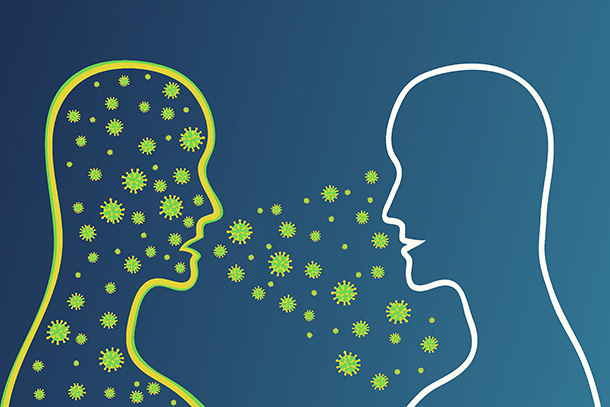 Face Mask that Sterilizes Incoming and Outgoing Air (Brady): U.S. Patent No. 11,219,255
Face Mask that Sterilizes Incoming and Outgoing Air (Brady): U.S. Patent No. 11,219,255
In a post-pandemic world, we are all more aware than ever of the possibility of another outbreak that could close schools, businesses, and borders with devastating consequences. Emergency and medical workers will need to be protected from the next airborne bacterial or viral infection, and that means disinfecting the air they breathe when treating those infected with airborne pathogens.
Whether it is another variant, a new mutation, or a biohazard situation, this patent creates a protective face mask that filters the incoming (or exhalent) infected air. This device is a portable, battery-operated breathing apparatus that offers broad-spectrum antimicrobial and allergen protection using a safe biocidal agent in conjunction with filtration to purify incoming and outgoing air. The mask combines hydrogen peroxide, as a liquid, steam or vapor, with iodized salt in a hydrophilic filter. This mask sterilizes incoming and exhaled air by capturing, neutralizing, and destroying airborne pathogens and other particulate matter and then replacing the infected air with sterilized oxygen or air for natural, unlabored breathing by the wearer.
U.S. Patent No. 11,219,255 for a “Self-contained, mobile breathing apparatus or appliance that supplies pathogen and endotoxin free, rhythmically breathable air to the wearer or treated space through active, continuous bio-deactivation and destruction of bacteria, fungi, viral and allergenic/antigenic matter safely when using benign, household, rechargeable filtration media” will enable any medical electronics manufacturer to introduce the next-generation in hazmat protection for emergency and medical personnel.
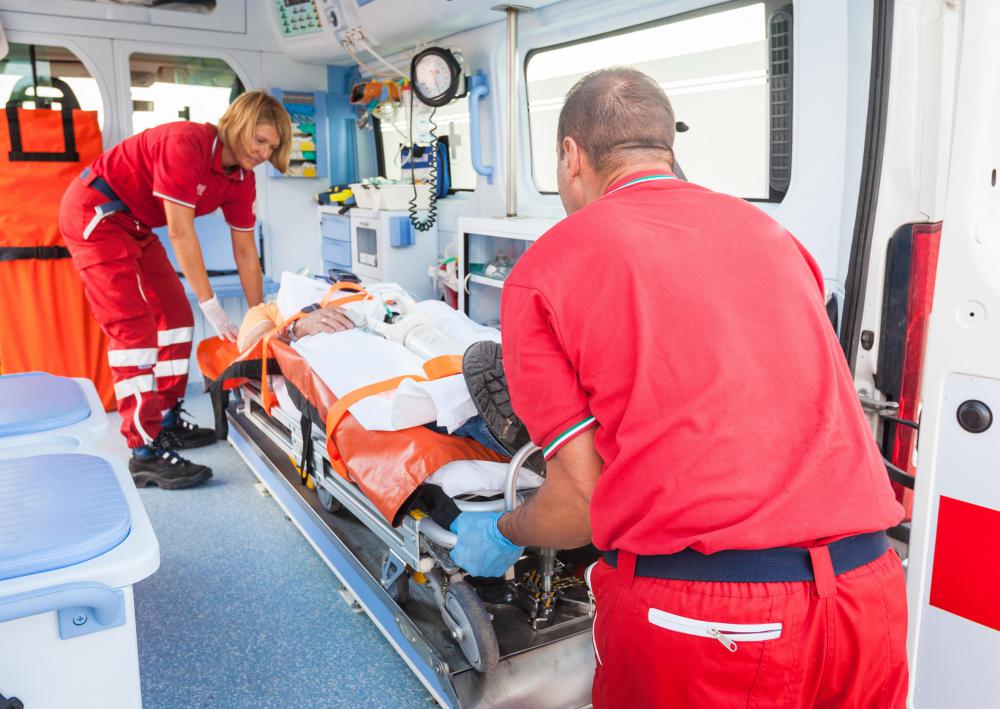 Next-Generation Patient Stretcher (Viveros): U.S. Patent No. 11,013,645
Next-Generation Patient Stretcher (Viveros): U.S. Patent No. 11,013,645
The injured have been transported on stretchers for literally hundreds of years. They originally used wooden poles across which canvass or another material was stretched. Today the frames of most stretchers are aluminum because it is strong and lightweight. Other than replacing the wooden poles with aluminum poles, not many improvements have been made to the emergency stretcher.
This patent changes all that by creating what is truly a next-generation stretcher. There are injuries that call for the patient’s legs to be elevated, or for special protection for the cervical or lumbar spine, but the current generation of stretchers cannot address that need – all they can do is carry the patient on a flat surface or prop up the head and shoulders of the patient. This new and improved stretcher has hinged, locking arms that permit the emergency personnel to quickly and easily raise a section of the stretcher to the optimum height and lock it in place so it supports the patient’s legs. Additionally, the lightweight plastic and other materials used to manufacture the stretcher allows it to be directly transferred from ambulances to radiography equipment, CT scanners, MRI machines, or operating rooms without the need to move the patient to another stretcher, improving efficiency and reducing the risk of further injury.
U.S. Patent No. 11,013,645 for an “Emergency stretcher” will enable any emergency equipment or medical products manufacturer to leapfrog the technology of all of its competitors and offer a stretcher with this important, added capability.
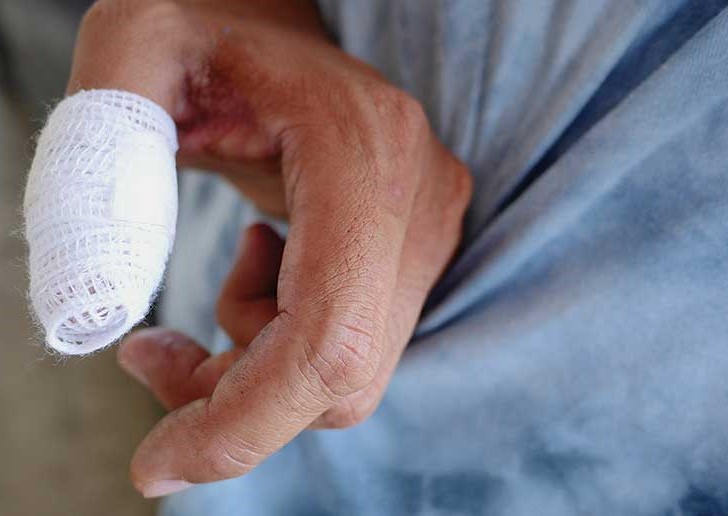 Bandage for Fingers and Deep Lacerations (J&C Medical): Australian Patent and U.S. and PCT Patent Applications
Bandage for Fingers and Deep Lacerations (J&C Medical): Australian Patent and U.S. and PCT Patent Applications
Adhesive bandages have been around for just over 100 years, and they are ideal for treating minor cuts and scrapes. However, the current generation of adhesive bandages have two shortcomings: They are not effective at bandaging fingers or deep lacerations.
This patent family covers a bandage with an extra pair of cross arms. In addition to two traditional adhesive strips that hold the bandage in place, there are two addition adhesive strips that extend out like two fingers. One set of strips holds the bandage in place vertically while the second set of cross arms hold the bandage in place horizontally. In the case of a finger, they wrap around the finger to hold the bandage securely in place. The result is a bandage that protects the wound from infection and also keeps a cut closed tightly so it can heal more quickly. In fact, for lacerations that might require stitches to close them, this bandage can be used by first aid crews to temporarily hold a deep wound closed until the patient can be taken to a medical facility. For wounds that are down to only the subcutaneous layer, this bandage may be used as a primary closure. One variation of the invention includes embedding an antibiotic in the adhesive to further prevent infection. Also, the patent’s design is totally scalable, allowing for bandages of multiple sizes and shapes.
U.S. Patent Application 20220362064 and Australian Patent 2022259762 for an “Adhesive wound dressing and method of application thereof for dressing lacerations” will enable any bandage manufacturer to introduce the next generation of adhesive bandages for both consumer and professional use. And the PCT Patent Application will permit the acquirer of this patent family to apply for additional national patents around the world.
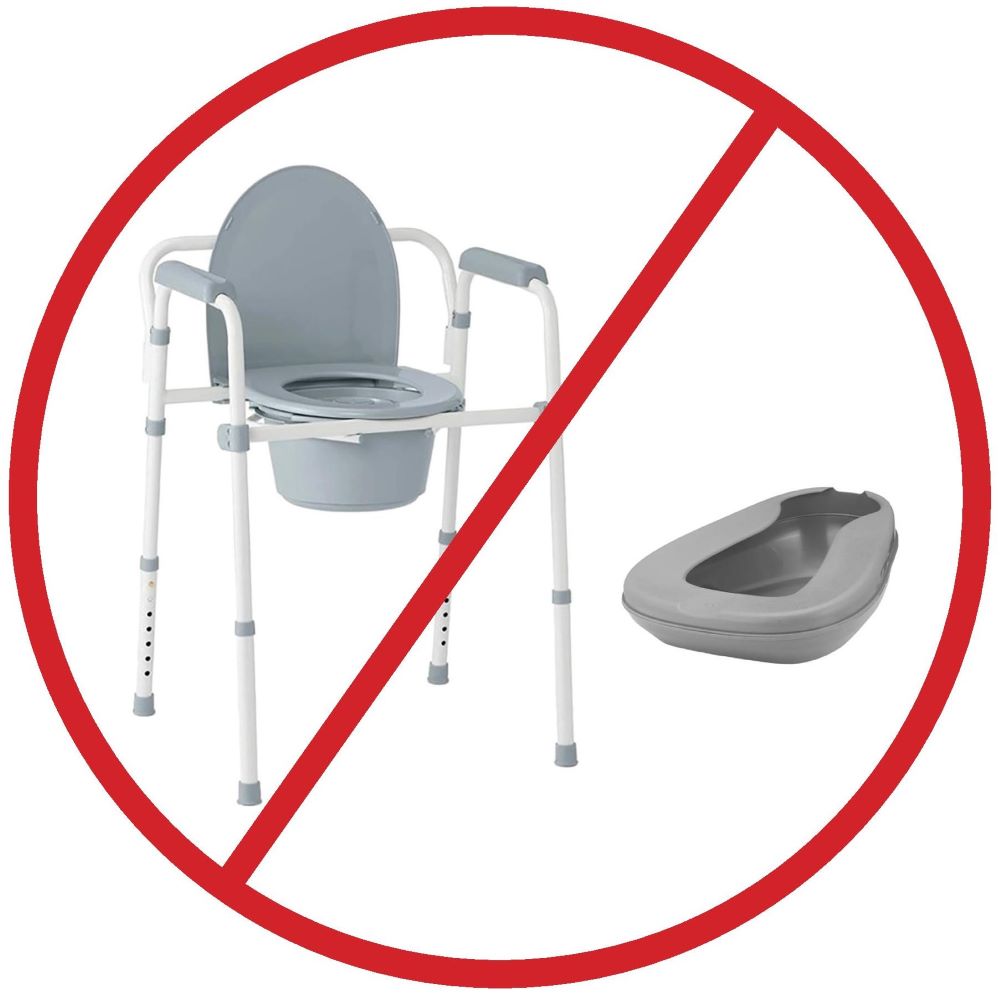 Bed with Toileting Capability: U.S. Patent No. 10,849,805 and Continuation
Bed with Toileting Capability: U.S. Patent No. 10,849,805 and Continuation
Toileting issues for the bed-bound or mobility-limited are an everyday challenge. Whether recovering from an illness or injury, or suffering from a long-term condition with limited mobility – at home, in a hospital, or other healthcare facility – toileting is an everyday, multiple-time occurrence. And that means either waiting for assistance getting out of bed and traveling to and from the bathroom, or using a bed pan, diapers, or catheter. None are an attractive, convenient, or practical option!
This patent creates a bed that allows its user to both urinate and have a bowel movement without leaving the bed. The mattress and frame of the bed include a cut-out opening that houses a waste container that permits the user to urinate or defecate. The waste drops into the container beneath the bed which can then be pulled out using a drawer system and easily removed for cleaning and replacement. Depending on health stage and capabilities, the user can remove a sealed container cover, slide over to use the container, clean himself or herself, and then replace the cover sealing in the odors. If the user is non-mobile and cognizant, he or she can lie directly over the custom filter padded container in open-back wear and eliminate as necessary. Waste will filter down away from the patient into a container which can be cleaned by a caregiver at a later time.
This bed spares the user the inconvenience and danger of using a walker, possibly falling, or having to wait for the assistance of a caregiver. The modular design allows for easy cleaning and hygiene maintenance as well as ease of replacement of components and assembly. U.S. Patent No. 10,849,805 and U.S. Patent Application 20210106477 for a “Bed” would enable any manufacturer of equipment for the healthcare industry to offer a specialized bed to meet the needs of bed-ridden or mobility-limited patients for in-home care as well as hospitals and other health care facilities.
 Extraction of Stem Cells from Adipose Tissue (Mystem): U.S. and European Patents
Extraction of Stem Cells from Adipose Tissue (Mystem): U.S. and European Patents
Stem cells have become a critical element in the treatment of many diseases and afflictions. Stem cells are the body's raw materials — cells from which all other cells with specialized functions are generated. Under the right conditions in the body or a laboratory, stem cells divide to form more cells called “daughter cells.” These daughter cells become either new stem cells or specialized cells with a more specific function. No other cell from the human body has the ability to generate new cell types.
However, harvesting regenerative cells for transplantation has been a challenge. The technology covered by this portfolio enables a surgeon to remove, concentrate, and re-administer the regenerative cells – and put them to work improving the healing process – in just minutes! The technology allows surgeons to obtain an autologous graft fraction that is rich in regenerative components. The portfolio creates a disposable kit that performs single-step, intra-OR, autologous, minimal tissue manipulation. Using this patented technology, it only takes about 10 minutes from harvesting to regenerative fraction final product. Currently, the most often used stromal tissues for regenerative purposes are bone marrow and adipose tissue. This portfolio creates a Class IIA medical device for autologous stromal tissue graft fractioning.
This portfolio consists of U.S. Patent No. 10,246,683 and European Patent 3174973 for a “Method and assembly for extraction of regenerative cellular components from adipose tissue.” This portfolio would be a strategic acquisition for any business that is currently supplying regenerative products or biomaterials or is prepared to enter this high-growth market segment.
 Next-Generation Surgical Foot Pedal Controls (Innovation Lab): U.S. Patent No. 11,134,775
Next-Generation Surgical Foot Pedal Controls (Innovation Lab): U.S. Patent No. 11,134,775
Today, a surgeon must possess highly developed hand-foot-eye coordination as more and more surgical equipment adds foot controls. Microsurgery, microvascular surgery, neurology, laparoscopy, orthopedic and endoscopy surgery, and ear, nose, and throat surgeries often utilize surgical equipment with both hand and foot controls. These create quite a challenge for the surgeon who has to quickly determine which foot pedal does what, and the surgeon has to make sure that the pedals do not move from where they are supposed to be so they are not activated accidentally.
This patent covers technology that takes foot pedal controls to the next level of convenience and performance. It accommodates multiple pedals, it uses a weighted device with a tacky bottom to prevent slippage and keep the foot pedal in the correct position, and it has slots that accommodate different gauge diameters for the cords going to and from the pedals. The result is it decreases breaks in sterile technique when a pedal moves and has to be re-positioned, it significantly reduces incorrect pedal activation, and it makes the pedals much easier to locate when they are needed. The design covered by this patent also features slots for the electrical cords to prevent tangling, it maintains pedals in a predictable order for each user but enables pedals to be easily customized as needed, and allows pedals to be more easily cleaned between procedures.
U.S. Patent No. 11,134,775 for a “Pedal organizer and related system” would enable any manufacturer of multi-control surgical equipment systems to add a new level of controls and convenience for the surgeons using their equipment. Foot pedals are also used in industrial and commercial applications, and the same benefits apply to those industries.
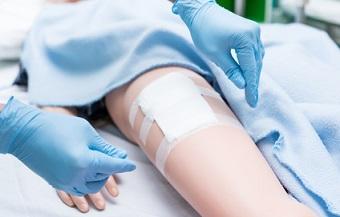 Infection-Prevention Bandage-Swab Kit (Khan): U.S. Patent No. 8,240,472
Infection-Prevention Bandage-Swab Kit (Khan): U.S. Patent No. 8,240,472
The biggest single risk in treating a wound is infection. Everything that comes in touch with the wound has to be 100% sterile, and that is not always easy nor practical. When a treatment has to be applied to the wound, it is often done with a swab. The problem often is that the swab comes in touch with different surfaces and objects on its way from its sterile packaging to the wound. And that creates a source of infection. Not good.
This patent tackles that issue head-on, and – like so many patents – the invention is brilliantly simple. Both a sterile bandage and a sterile swab are packaged together in a two-compartment sealed kit. The sterile swab is removed from its sterile compartment and immediately used to apply treatment to the wound before it can touch any foreign object or it comes in contact with any surfaces. Then the sterile bandage is removed from the second sterile compartment and applied to the wound. So, both the swab and the bandage remain 100% sterile, significantly reducing the risk of infection. The container holding the swab and bandage can also contain an antibacterial agent, so the swab and bandage are ready-to-use. Quick and proper attention to a wound will speed healing and reduce scarring.
U.S. Patent No. 8,240,472 for a “Combination bandage and wound treatment system” would enable any supplier of medical products to offer an affordable, practical, and totally sterile would-care solution! It can be offered as an over-the-counter product for consumers, a product for medical professionals at hospitals and other medical facilities, a wound-treatment kit to take camping, fishing, or hunting, or as a component in first-aid kits.
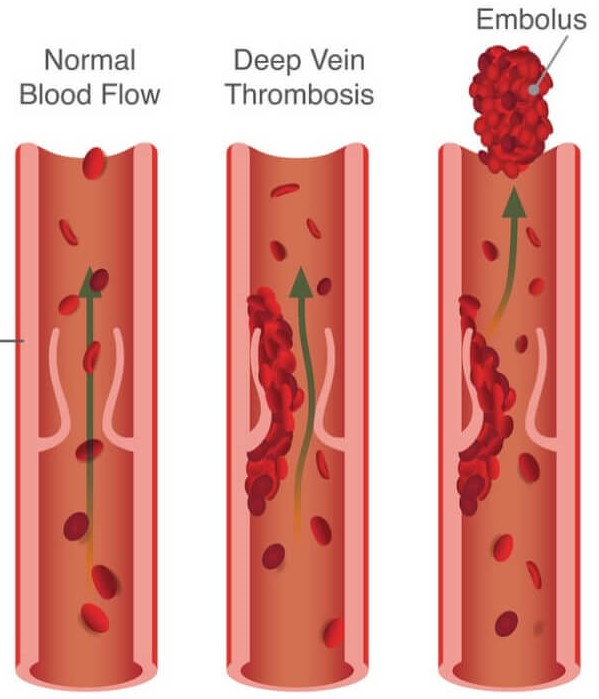 Blood Clot Prevention Device (Khan): U.S. Patent No. 8,579,841
Blood Clot Prevention Device (Khan): U.S. Patent No. 8,579,841
Blood clotting or coagulation is an important human process that enables blood to dry and form a protective covering over wounds. However, when blood clots form in the arteries – known as thrombosis – it becomes a serious health hazard. When clots collect in the deep veins in the legs or arms – a condition known as venous thromboembolism or deep vein thrombosis (DVT) – those clots can make their way to the heart, lungs, or brain and result in a stroke or death. As the U.S. population ages, deep vein thrombosis will become an increasingly more serious medical condition.
This patent covers a pressure cuff that contains bladders that are arranged in succession down the arm or leg of a user. An air compressor inflates the bladders, and a control module sequentially opens valves in the bladders to provide pressure in succession along the arm or leg of the patient. Additionally, tubes equalize pressure between bladders before exhausting air from a previously pressurized bladder to allow for increased patterns of bladder pressure. Pressure levels and bladder dwell times may be adjusted by the user or his or her physician, or can be based on predetermined settings. The device can also provide electrical stimulation, pulsations, heating, and cooling to increase blood flow and totally eliminate – or substantially reduce – clotting in the limbs.
U.S. Patent No. 8,579,841 for a “Blood clot prevention device” can be used to create a highly effective, non-drug, no-side-effects treatment for blood clotting in the arms and legs. This patent would be a strategic acquisition for any medical product manufacturer.
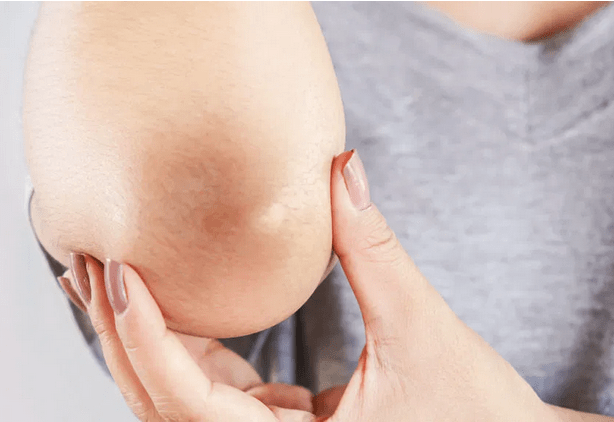 Specialized Skin Exfoliation (Perez): U.S. Patent No. 8,585,621
Specialized Skin Exfoliation (Perez): U.S. Patent No. 8,585,621
The skin is the largest organ in the human body. The outer layer of skin is continually dying and being replaced by new skin that replaces it. When a person gets a tan, that tan is a layer of darker, dead skin. Elbows, however, create a special problem. Dead skin builds up on the elbows, causing them to get darker and darker, creating a condition known as “Dark Elbows.” While Dark Elbows are not a health hazard, they can be very unattractive. This patent creates a device that specifically addresses Dark Elbows and other specialized skin exfoliation needs.
This patent creates a tabletop or floor-based skin exfoliation device that is enclosed in a housing. The user turns it on and places his or her elbows on the top surface of the device. The vibrating abrasive surface gently cleans away the dead skin from the elbows, eliminating Dark Elbows, and leaving a consistent skin tone on the user’s arms. The unit can also be placed on the floor, and the user can place his or her feet on the device to remove dead skin from the heels and soles of the feet. For the treatment of Dark Elbows, and for exfoliating feet, this device is clearly superior to the current generation of handheld exfoliation devices that are on the market.
U.S. Patent No. 8,585,621 for a “Skin exfoliation apparatus” would be a strategic acquisition for any manufacturer of exfoliation products looking to expand its product offerings, or for any medical device manufacturer seeking to expand into the huge exfoliation market with a unique, patent-protected product.
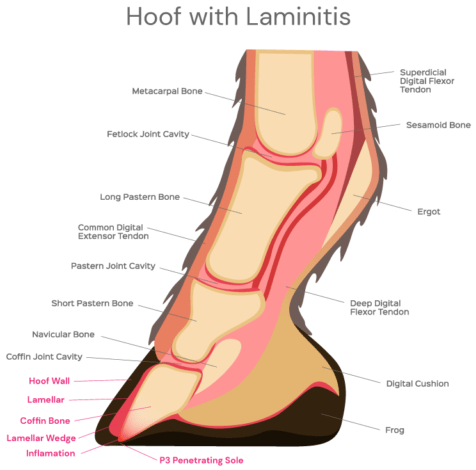 Laminitis Treatment for Horses (Medergo): U.S. Patent No. 8,465,444 and European Patent Application
Laminitis Treatment for Horses (Medergo): U.S. Patent No. 8,465,444 and European Patent Application
Horses are smart, affectionate, and incredibly loyal. It is a shame that hundreds of horses a year have to be euthanized because they suffer from laminitis - an inflammation of the soft tissue structures that attach the coffin or pedal bone of the foot to the hoof wall known as “laminae” – and they cannot be effectively treated. As laminitis (also known as “founder”) progresses, a horse can eventually not stand or walk, and the horse must be put down. Such a tragedy for such wonderful animals that have been bred and raised and cared for by humankind for centuries.
This portfolio creates an effective and affordable treatment for laminitis. The invention is a garment wrap that is secured to the animal's leg and includes inflatable chambers that engage critical points on the horse’s leg and hoof. The inflatable chambers are pressurized in a sequence that prevents backflow from a more proximal point on the animal's leg to a more distal point on the leg. A boot with an inner sole pad is also used during the therapy procedure and afterwards, and the inner sole pad can be used to administer medications as well as for an iontophoresis procedure. The boot assists with other treatments to increase circulation to aid healing in the hoof by increasing blood flow.
Wounds and problems of the legs of horses are the result of poor circulation along with lymphedema, venous stasis, trauma, cellulitis, and postsurgical swelling. In addition to treatment of laminitis, this invention can be used as a rehabilitative device as well as a conditioning tool for animals that are recuperating from other conditions. This treatment for horses was developed from a similar method used with great success on thousands of human patients with circulatory issues.
This portfolio includes U.S. Patent No. 8,465,444 and European Patent Application 2983634 for “Laminitis treatment system and method.” The acquirer of this portfolio can create the first effective and affordable – as well as life-saving – treatment for laminitis in hoofed animals with patent protection on two continents.
 Bacteria Biosensor Detection System (Edmonson): Two U.S. Patents, Canadian Patent and Prototypes
Bacteria Biosensor Detection System (Edmonson): Two U.S. Patents, Canadian Patent and Prototypes
When examining a patient, and a bacterial infection is suspected, it is important for the physician to know quickly if live bacteria are present. Farmers need to know if bacteria are present that can be a threat to their crops and feedstocks. Food processing plants need to be able to quickly detect if bacteria are present in food processing, handling and storage equipment and locations. The invention covered by this portfolio addresses exactly that need by creating a low-cost, portable, easy-to-use bacteria biosensor that can detect the presence of live bacteria in real time.
| Patent No. | Title |
| US 7,651,843 | Acoustic wave biosensor for the detection and identification of characteristic signaling molecules in a biological medium |
| US 8,420,382 | Acoustic wave biosensor for the detection and identification of characteristic signaling molecules in a biological medium |
| CA 2520812 | Method and system for archiving biomedical data generated by a data collection device |
This portfolio covers an invention that detects, isolates and characterizes the QS signals made by both Gram Positive and Gram Negative bacteria. It creates a low-cost, small and portable testing unit for at-home, in-clinic, in-facility or in-field use. It can detect bacteria in either vapor or liquid, as a breathalyzer-type bacteria monitor, or a unit that can be placed in a location to sample the surrounding air for bacterial-signaling molecules.
In addition to the two U.S. Patents and the Canadian Patent, this portfolio includes working prototypes, so the company that acquires this property will be able to go to market very quickly with a bacteria biosensor that is cheaper than current products, produces results faster, and can be used in many more locations and applications!
 ID/Medical Data/Alerts System (Solomon Systems): Five U.S. Patents
ID/Medical Data/Alerts System (Solomon Systems): Five U.S. Patents
What happens when a person needs medical attention, but that person is unconscious? Or seriously injured or disabled? Or cannot speak? Or is disoriented and not totally lucid? It is difficult to provide medical care without at least some basic health information about that person. This challenge – an increasingly common occurrence – is what the invention covered by this portfolio addresses.
This portfolio covers a health-record provisioning system with multiple advantages:
- It provides biographical information and allows medical professionals to quickly obtain the subject's medical records such as medications and allergies.
- The subject’s medical and biographical information is stored in a removable object that the subject can place on – and can be quickly removed from – the body, clothing or accessory (such as a wallet or purse) when required. For example, the medical and biographical information may be stored as a QR image or a chip that is embedded in the ID cards issued by healthcare insurance companies.
- In the event of an emergency, police, EMTs, emergency room personnel or other health care providers can scan the person’s ID device or card to obtain the person’s name, contact information, and pertinent health records.
- The disclosed system also alerts the subject to upcoming events, such as when the next breast exam or colonoscopy is due.
The portfolio includes U.S. Patent Nos. 8,181,862, 8,485,439, 8,833,649, 9,165,335 and 9,390,231 titled "System for Providing Identification and Information, and for Scheduling Alerts." Included in the portfolio are two Chinese Patent Applications and a PCT Application. Technology covered by this portfolio has the capabilities to save lives, and it would give a critical competitive advantage to a healthcare provider, electronic device OEM or smartcard provider.
Patent Brokerage Prospectus: Contact [email protected] to receive an analysis of each portfolio that includes:
- Executive Summary
- Patent Overview and History
- Technology and Investment Summary
- Market Research
- Company Analysis
- Illustrative Evidence of Use (if applicable)
We offer patents in these technologies:
- Agricultural
- Artificial Intelligence
- Automotive/Vehicular
- Banking/Financial Services
- Beverages/Foods/Nutritional Products
- Boat and Marine
- Cannabis and Medical Marijuana
- Construction/Building Trades
- Consumer Electronics
- Consumer Products
- Digital Currency/Cryptocurrency
- Drones/UAVs
- E-Cigarette & Vaping Technology
- E-Commerce
- Energy/Power Generation
- Health and Beauty Products (HBP)
- IoT Patents/Internet of Things
- Manufacturing
- Medical Electronics and Devices
- Mining/Drilling
- Mobile/Wireless
- Network/Location-Based Services
- Optics/Displays/Video/LED
- OTT Patents/Over-the-Top
- Packaging
- PCs and Notebooks
- Pharmaceuticals
- Robotics/Automation
- Semiconductor
- Smart Home/Smart Office
- Social Media
- Software, Apps, and Architecture
- Sports/Sporting Goods
- Telecommunications/IP Telephony
- Warehousing/Material Handling
- Other
- Go to Patent Index
- Return to Patent MarketPlace




